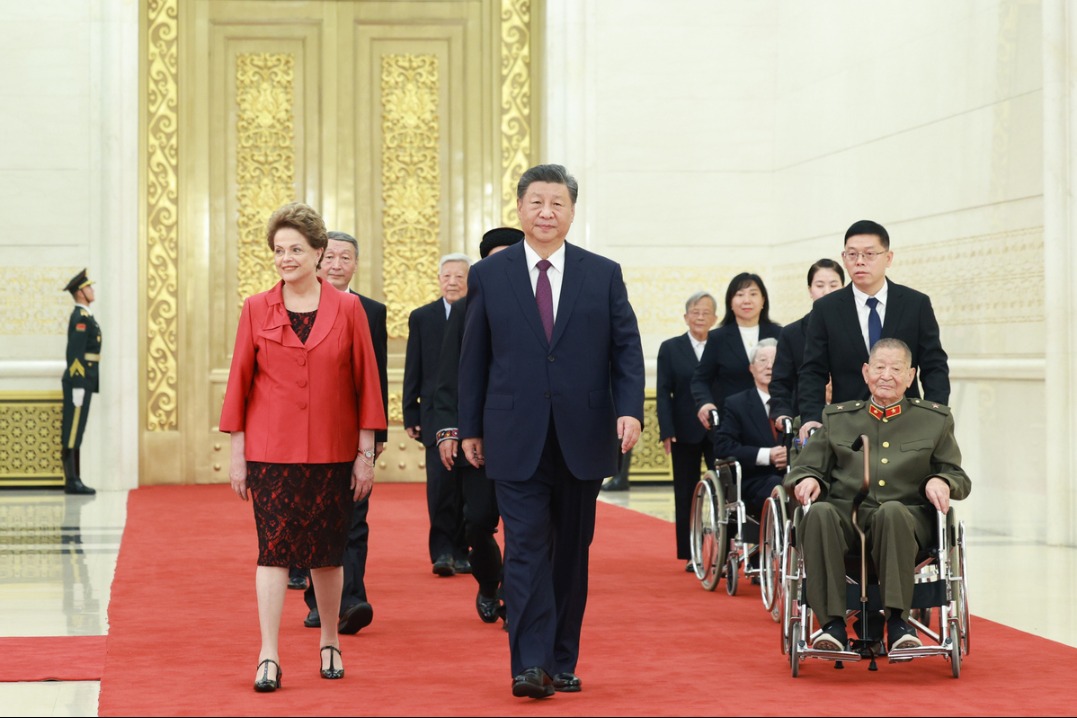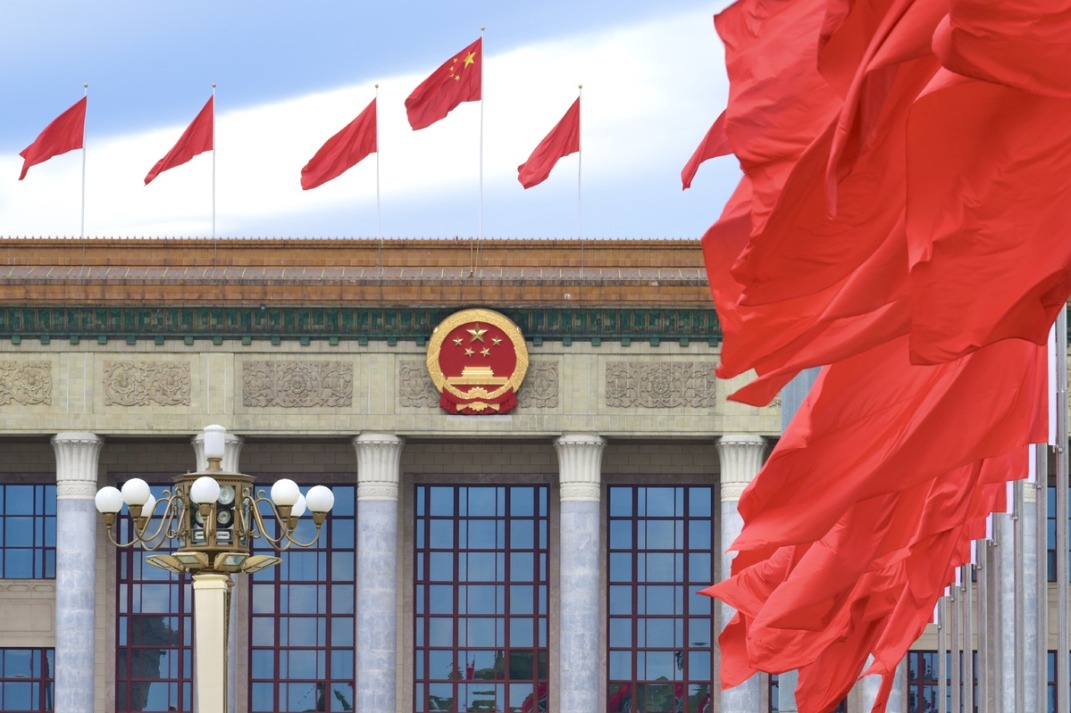How maritime search and rescue cooperation can be strengthened in South China Sea
By Ding Duo | chinadaily.com.cn | Updated: 2024-03-21 09:11

In recent years, despite changes in the international situation, calmer waters have prevailed in the South China Sea. This is due to the joint efforts of countries in the region and the effectiveness of the Declaration on the Conduct of Parties in the South China Sea.
The South China Sea is a major maritime route and an important energy channel, with 3 international main shipping routes and 27 regional branch routes. Fifty percent of the world's merchant ships and one-third of the world's maritime trade pass through the South China Sea. In addition, the sea is rich in fishery resources, and there are a large number of fishing vessels from neighboring countries. In 2023, more than 210,000 fishing vessels operated in the South China Sea. At the same time, with frequent typhoons, complex and changeable sea conditions, and numerous reefs and shoals in the sea, coastal states have an arduous task of maintaining the safety of maritime navigation and carrying out search and rescue operations.
According to the 1979 International Convention on Maritime Search and Rescue, maritime search and rescue is an action with the main objective of searching for and saving human life in the event of a marine accident such as a ship collision, capsizing, grounding, or aircraft crash.
At the operational level, since most of the dangers at sea are accidents, maritime search and rescue activities need to be highly time sensitive. Internationally, two hours to the scene of search and rescue is generally regarded as the main reference for the coverage of professional maritime search and rescue forces.
Due to the vast ocean space, the diversity of activity subjects, and the differences in the legal status of different sea areas, to be timely and effective, maritime search and rescue activities also need to have strong professionalism and coordination. Civil society is often encouraged or required to conduct or participate in maritime search and rescue operations, but these characteristics of maritime search and rescue dictate that it needs to be led by governments and, in many cases, by multinational cooperation.
Whether official or nongovernmental, China and ASEAN countries have a strong practical need for maritime search and rescue cooperation. In March 2023, China's maritime search and rescue forces successfully towed the breakdown Panamanian-flagged bulk carrier "FuPing", which was carrying21 people on board, to safety in the southwest waters of Wan'an Tan in the Nansha Qundao. In July 2023, in the waters near Jinqing Dao in the Xisha Qundao, China's maritime search and rescue forces rescued a semi-submersible ship (25 people on board), which was in danger due to main engine failure, and helped its repair main engine. In September 2023, in the waters near Yongshu Jiao in the Nansha Qundao, China's maritime search and rescue forces rescued a Liberian-flagged freighter carrying 19 Filipino crew members, which was in danger due to main engine failure, and helped its repair of the main engine. In November 2023, when the Marshall Islands-flagged ship "Es Jasmine" was sailing through the waters of Beibu Bay, a Vietnamese sailor accidentally fell and fractured his arm. With the coordination of the Hainan Maritime Search and Rescue Center, the injured sailor received timely treatment in Haikou.
Over the years, maritime search and rescue cooperation has been an important part of practical cooperation in the South China Sea, and it is also the consensus reached between China and ASEAN countries. In November 2002, China and the 10 ASEAN countries signed the Declaration on the Conduct of Parties in the South China Sea. According to Article 6 of the DOC, the parties concerned may explore or carry out cooperation in the field of search and rescue before the dispute over territorial sovereignty and maritime jurisdiction in the South China Sea is fully and permanently resolved.
In the following four editions of the Plan of Action to Implement the ASEAN-China Strategic Partnership for Peace and Prosperity (2005-2010, 2011-2015, 2016-2020, and 2021-2025), strengthening maritime search and rescue cooperation has been included in the relevant items. In 2017, China and ASEAN countries also established a technical cooperation commission on navigation safety and search and rescue. Under the guidance of the spirit of these documents and approach, China and ASEAN countries have carried out maritime consultations, conducted joint sand table exercises and joint search and rescue exercises, held high-level training courses, and achieved many results in substantive cooperation.
Although the search and rescue cooperation of the countries surrounding the South China Sea has made positive progress and achieved phased results under the promotion of China, the current cooperation is still limited to a few coastal countries in the South China Sea, and there is a lack of unified, coordinated and normalized emergency plans and facility deployment among countries, so the ability of international rescue coordination and information sharing still needs to be improved.
Due to the complexity of the disputes in the South China Sea, there is still a long way to go to form a comprehensive and stable regional maritime search and rescue cooperation mechanism in the sea. China and ASEAN countries can continue to promote maritime search and rescue cooperation in the following aspects, and make functional cooperation in the South China Sea more substantive:
The first is to strengthen the sharing of maritime search and rescue information and technical experience, and regularly carry out bilateral or multilateral maritime search and rescue sand table exercises, communication drills or live ship drills, to continuously improve the efficiency of maritime emergency rescue.
Second, China and ASEAN countries are encouraged to carry out various forms of cooperation projects on maritime search and rescue through bilateral or multilateral channels, including joint research and development of technology and equipment.
Third, in accordance with relevant international treaties, with reference to relevant international standards, and with full consideration of the national conditions of each country, China and ASEAN countries can explore the formulation of operational procedures, technical guidelines and contingency plans for maritime search and rescue operations.
Ding Duo is deputy director and associate research fellow, at the Research Center for Ocean Law and Policy at the National Institute for South China Sea Studies.
The views don't necessarily reflect those of China Daily.
If you have a specific expertise, or would like to share your thought about our stories, then send us your writings at opinion@chinadaily.com.cn, and comment@chinadaily.com.cn.
























